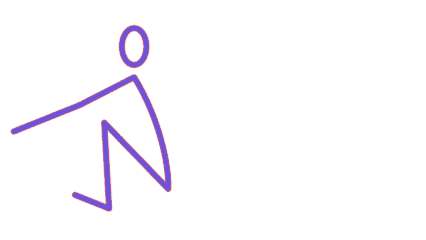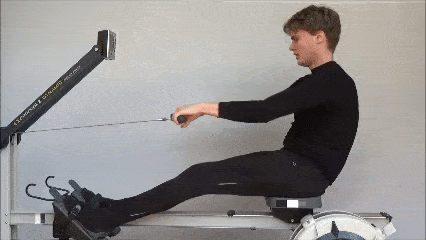|
|
Finish – Sticky handle(s) |
| Mistake: | The handle(s) is/are kept stationary at the end point of the draw. Also see:  Finish. Finish. |
| Observe: | Handle: see how handle(s) stand still for a moment at the finish. |
| Cause: | Wrong mental image of the (ideal) stroke, wrong thought about the moment the draw is finished in particular at the end of the draw instead of at the rest point or ¼ seat. (Wrongly executed)  Australian stroke. Australian stroke. |
| Conse- quence: |
Crew weight presses for a long time on the tip of the boat causing speed loss. During the recovery, the handle stops (loss of time), which means that - at the same stroke rate - you have to slide harder to make up for that lost time. This has a negative effect on the boat speed at the catch. The standstill makes the rower lag behind in the recovery compared to the rest of the crew, which can only be compensated by sliding. This causes a lot of unevenness in the boat and also has a negative effect on the speed. |
| Remedy: | Help the rower find the right rhythm with the exercise  Trunk throwing. Arms only rowing, where the handle(s) may not pause. Thereafter Trunk throwing. Arms only rowing, where the handle(s) may not pause. Thereafter  Dynamic lengthening whereby the handle(s) must also keep moving. Transfer by asking the rower to write a horizontal (lying Dynamic lengthening whereby the handle(s) must also keep moving. Transfer by asking the rower to write a horizontal (lying |
| Feed- back: |
Tactile because the handle(s) go like a kind of bouncing ball towards and away from the chest. Visually by looking at the continued movement of handle(s) or blade. |
| Cox chair: |
A rower's blade(s) pauses at the finish. It is not carried through in a smooth movement from draw to recovery. |

The effect of sticky handles (red) compared to a good rowing teammate (blue). (www.rowanimation.nl).

Sticky handle(s)
 |
Finish – Blade turn out |
 |
Finish – Sticky trunk |
This article was translated automatically and is provided to you for free. You are most welcome to improve it!











